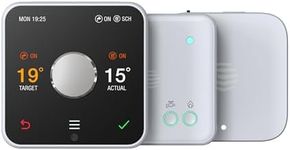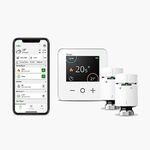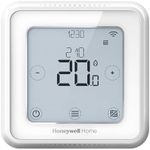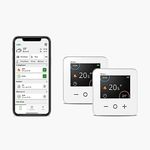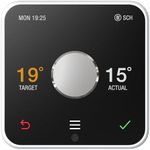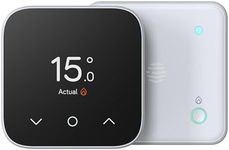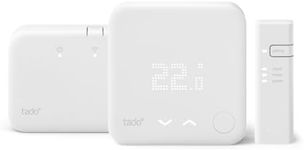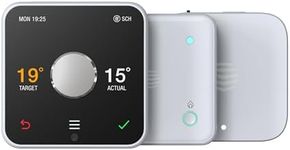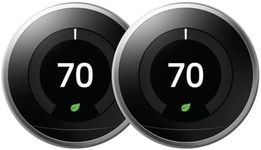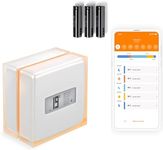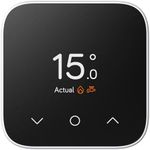Buying Guide for the Best Wifi Thermostats
When choosing a WiFi thermostat, it's important to consider how it will integrate with your home's heating and cooling system, as well as how it will fit into your lifestyle. A WiFi thermostat can offer convenience, energy savings, and enhanced control over your home's climate. To make the best choice, you'll need to understand the key features and specifications that differentiate one model from another. This will help you select a thermostat that meets your specific needs and preferences.CompatibilityCompatibility refers to whether the WiFi thermostat can work with your existing heating and cooling system. This is crucial because not all thermostats are compatible with all systems. Systems can vary widely, from single-stage to multi-stage, and may include heat pumps or electric baseboards. To navigate this, first identify your current system type and then look for thermostats that explicitly state compatibility with it. If you have a complex system, you may need a more advanced thermostat. For simpler systems, a basic model may suffice.
ConnectivityConnectivity is about how the thermostat connects to your home network and other smart devices. This is important for remote control and integration with smart home ecosystems. WiFi is the standard, but some models also support Bluetooth or Zigbee. Consider your home network's reliability and your preference for smart home integration. If you have a robust WiFi network and use smart home devices, a WiFi-enabled thermostat with smart home compatibility is ideal. If your network is less reliable, look for models with additional connectivity options.
User InterfaceThe user interface is how you interact with the thermostat, either through a touchscreen, physical buttons, or a mobile app. A good interface is important for ease of use and accessibility. Touchscreens offer a modern look and intuitive controls, while physical buttons can be more straightforward for some users. Mobile apps provide remote access and additional features. Consider how comfortable you are with technology and whether you prefer controlling the thermostat directly or via an app. Choose an interface that you find easy to navigate and use.
ProgrammabilityProgrammability refers to the thermostat's ability to set schedules for heating and cooling. This feature is important for energy efficiency and convenience. Thermostats can range from basic models with simple daily schedules to advanced ones with customizable weekly programs and learning capabilities. If you have a predictable routine, a programmable thermostat can help save energy by adjusting temperatures when you're away. For those with varying schedules, a learning thermostat that adapts to your habits might be more suitable.
Energy MonitoringEnergy monitoring is a feature that tracks your energy usage and provides insights into your consumption patterns. This is important for identifying ways to reduce energy costs and improve efficiency. Some thermostats offer detailed reports and suggestions for optimizing energy use. If you're interested in tracking and reducing your energy consumption, look for models with robust energy monitoring features. If this is less of a priority, a basic model without this feature may be sufficient.
Integration with Smart Home SystemsIntegration with smart home systems refers to the thermostat's ability to work with platforms like Amazon Alexa, Google Assistant, or Apple HomeKit. This is important for creating a seamless smart home experience. If you already use a smart home system, choose a thermostat that is compatible with it to enable voice control and automation. If you're not using smart home systems, this feature may not be necessary, but it can offer future-proofing if you plan to expand your smart home setup.
